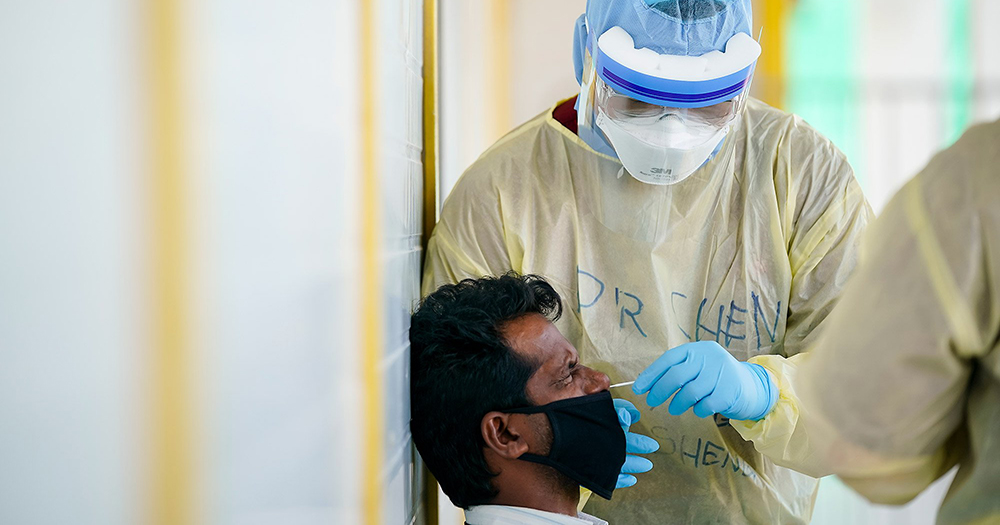The total number of new cases in Singapore should come down significantly by the end of August, Minister for Education and Multi-ministry Taskforce (MTF) co-chair Lawrence Wong stated in a press conference on August 6.
Covid-19 migrant worker cases will be "volatile" for two weeks before tapering down
Wong said that the MTF is on track to clear dormitory cases by the end of August 7.
Once that is done, what remains are the workers who remain in isolation, within quarantine facilities.
However, he clarified, along with Kenneth Mak, the Director of Medical Services, and Minister for Health Gan Kim Yong, that the number of Covid-19 cases among will remain "volatile" for some time before tapering down.
Wong said that this is due to the tests being carried out on the isolated workers.
He explained:
"It may be that very high numbers test negative and then we will have very few case counts, but it may also be that quite a large number test positive and then, on occasion, you may see spikes in the cases."
However, this volatility is only expected to persist for two weeks before coming down, once the last batch of workers in isolation has been cleared.
As such, the total number of new cases should begin tailing off by the second-half to the end of August, Wong added.
First few days beyond August 7 might also reflect cases from dormitories
In addition, Mak also highlighted that the first few days beyond August 7 will continue to reflect the testing that took place for workers in dormitories.
He said:
"Results from those tests may take a few days before they come out and therefore the subsequent report we have for the next few days after the seventh of August, may still reflect that testing that took place for workers in the dormitories."
Mak then added that the possibility of high numbers was on the basis of testing the workers within quarantine facilities.
In giving more context to Mak's remarks, Gan pointed out that isolated workers in quarantine facilities are those who had been in contact with confirmed cases, and therefore had a higher probability of testing positive.
He said:
"We are likely to pick up more cases, because...[they] just have been exposed to a positive cases. As to how many, it's very difficult to to to predict, because it depends on the external exposure, it depends on whether they are positive or not.
And in some days it may go up, because it just happened that this batch of workers who are finishing their quarantine period happened to have a high prevalence rate.
And in some days it may be very low because these workers are generally uninfected, so you may see volatility in the numbers."
Top image from Jurong Health Campus Facebook
If you like what you read, follow us on Facebook, Instagram, Twitter and Telegram to get the latest updates.
